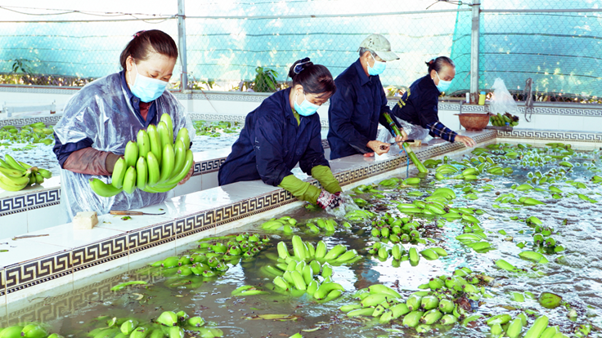Vietnam is the second largest banana supply market for China
Vietnam is the second largest banana supply market for China, accounting for 28.2% of the total amount of bananas imported by this market in the first 10 months of 2023.
The Import-Export Department (Ministry of Industry and Trade) cited statistics from the Chinese Customs Authority, in the 10th month of 2023, the import value of bananas (HS code 0803) of China reached 1.46 million tons, worth 912.4 million USD, down 7.1% in volume and down 10% in value compared to the same period in 2022. The average imported banana price in the first 10 months of 2023 reached 623.2 USD/ton, down 3 .1% over the same period in 2022.

China imported the most bananas from the Philippines and Vietnam markets in the first 10 months of 2023, imports from these two markets accounted for 67.1% of the total imported bananas. In particular, China increased the proportion of banana imports from Vietnam and decreased the proportion of banana imports from the Philippines.
On November 1, 2022, the Ministry of Agriculture and Rural Development of Vietnam and the Chinese Customs Administration signed a Protocol on the export of fresh bananas from Vietnam to China. The signed protocol brings significant growth for Vietnamese bananas into the Chinese market.
Vietnam's banana market share has increased significantly and is the second largest supply market for China, accounting for 28.2% of total Chinese banana imports in the first 10 months of 2023, an increase of 2.6 percentage points compared to the same period in 2022, an increase of 7.3 percentage points compared to the same period in 2021 (the time before the Protocol was signed).
The export potential of fresh and processed bananas is still very large because this fruit is harvested all year round. China tends to increase banana imports from the Vietnamese market because of its favorable geographical location.
In addition, China's banana growing area has decreased due to increased agricultural input costs, land rental and labor costs while disease outbreaks have made this crop less effective./.
Minh Toan


